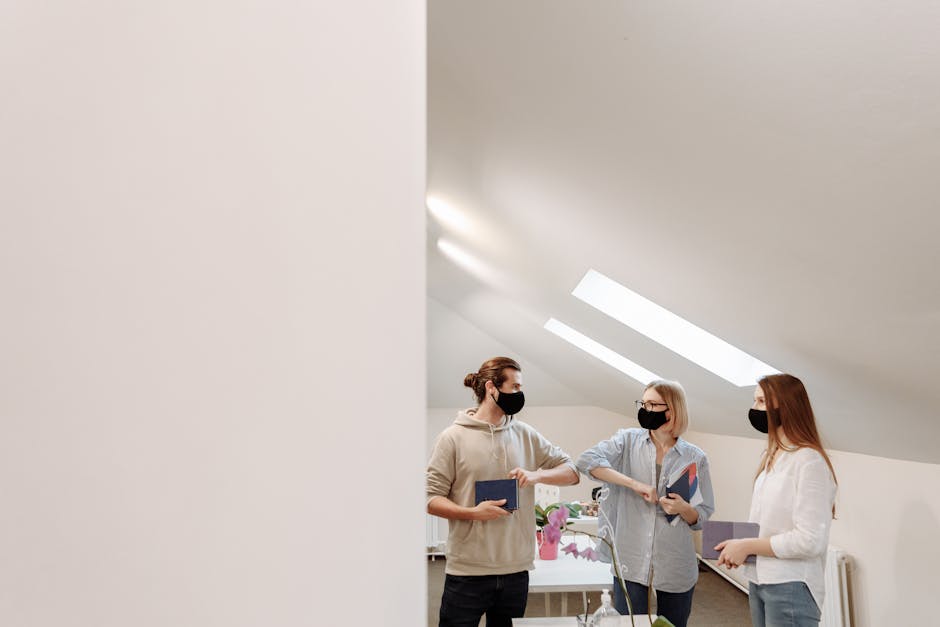How to Create COVID-Compliant Offices and Breakrooms: A Comprehensive Guide
“This guide provides a comprehensive overview of how to create COVID-compliant offices and breakrooms. Learn about socially distant seating arrangements, capacity management, and best practices for maintaining a safe and healthy workplace during the pandemic. ”

Introduction
The COVID-19 pandemic has transformed the way we work, and creating a safe and healthy workplace is now more important than ever. As companies begin to welcome employees back to the office, it's crucial to implement measures that promote social distancing and reduce the risk of transmission. In this guide, we'll explore how to create COVID-compliant offices and breakrooms, focusing on socially distant seating arrangements, capacity management, and best practices for maintaining a safe work environment.

Setting Up Socially Distant Seating
One of the key aspects of creating a COVID-compliant office is ensuring proper social distancing between employees. The CDC recommends maintaining a distance of at least six feet between individuals. To achieve this, consider the following steps:
-
Map out foot traffic flow: Before arranging seating, analyze the office layout and identify high-traffic areas. Create one-way footpaths to minimize face-to-face interactions and ensure employees can move safely throughout the space.
-
Identify high-congestion areas: Pinpoint areas where employees tend to congregate, such as printer stations, breakrooms, and entryways. Limit seating near these areas to provide ample space for movement and social distancing.
-
Create six-foot buffers: Use a tape measure or visual cues to establish six-foot buffers around each desk or seating area. Remove or block off workstations that don't adhere to the recommended distance.
-
Utilize signage: Implement clear signage throughout the office to direct traffic flow, reinforce social distancing guidelines, and indicate off-limit areas. Consider using digital signage for easy updates and real-time capacity information.

Managing Workplace Capacity
In addition to socially distant seating, it's essential to manage the overall capacity of your workplace to prevent overcrowding. Here are some tips for effectively managing capacity:
-
Set capacity limits: Determine the maximum number of employees that can safely occupy the office based on local regulations and the available space after implementing social distancing measures.
-
Implement a hybrid work model: Consider adopting a hybrid work approach, where employees alternate between working from home and the office. This can help reduce the number of people on-site at any given time.
-
Utilize employee registration tools: Leverage technology, such as WOX Protect, to automate capacity management. These tools allow you to set capacity limits and prevent overcrowding by stopping check-ins once the limit is reached.
-
Communicate protocols: Clearly communicate capacity limits and protocols to employees before they return to the office. Encourage feedback and be prepared to iterate and improve processes as needed.
Creating Safe Breakrooms
Breakrooms are essential spaces for employees to relax and recharge, but they can also be high-risk areas for virus transmission. To create safe and COVID-compliant breakrooms, consider the following:
-
Limit capacity: Establish a maximum occupancy for the breakroom based on its size and the ability to maintain social distancing. Use signage to communicate the capacity limit and encourage employees to stagger break times.
-
Rearrange seating: Reconfigure breakroom seating to ensure at least six feet of distance between individuals. Remove or block off excess chairs and tables to discourage overcrowding.
-
Provide sanitization supplies: Stock the breakroom with hand sanitizer, disinfectant wipes, and other cleaning supplies. Encourage employees to clean surfaces before and after use.
-
Promote individual meals: Discourage shared meals and communal food items. Instead, encourage employees to bring their own food and utensils from home.

Conclusion
Creating COVID-compliant offices and breakrooms requires careful planning and attention to detail. By implementing socially distant seating arrangements, managing workplace capacity, and promoting safe practices in shared spaces, companies can create a safer and healthier work environment for their employees.
Remember to continuously monitor and adapt your protocols as guidelines and best practices evolve. Regularly communicate with your team and encourage feedback to ensure everyone feels comfortable and supported in the workplace.
By prioritizing employee safety and well-being, companies can navigate the challenges of the pandemic and create a resilient and thriving workplace culture.
